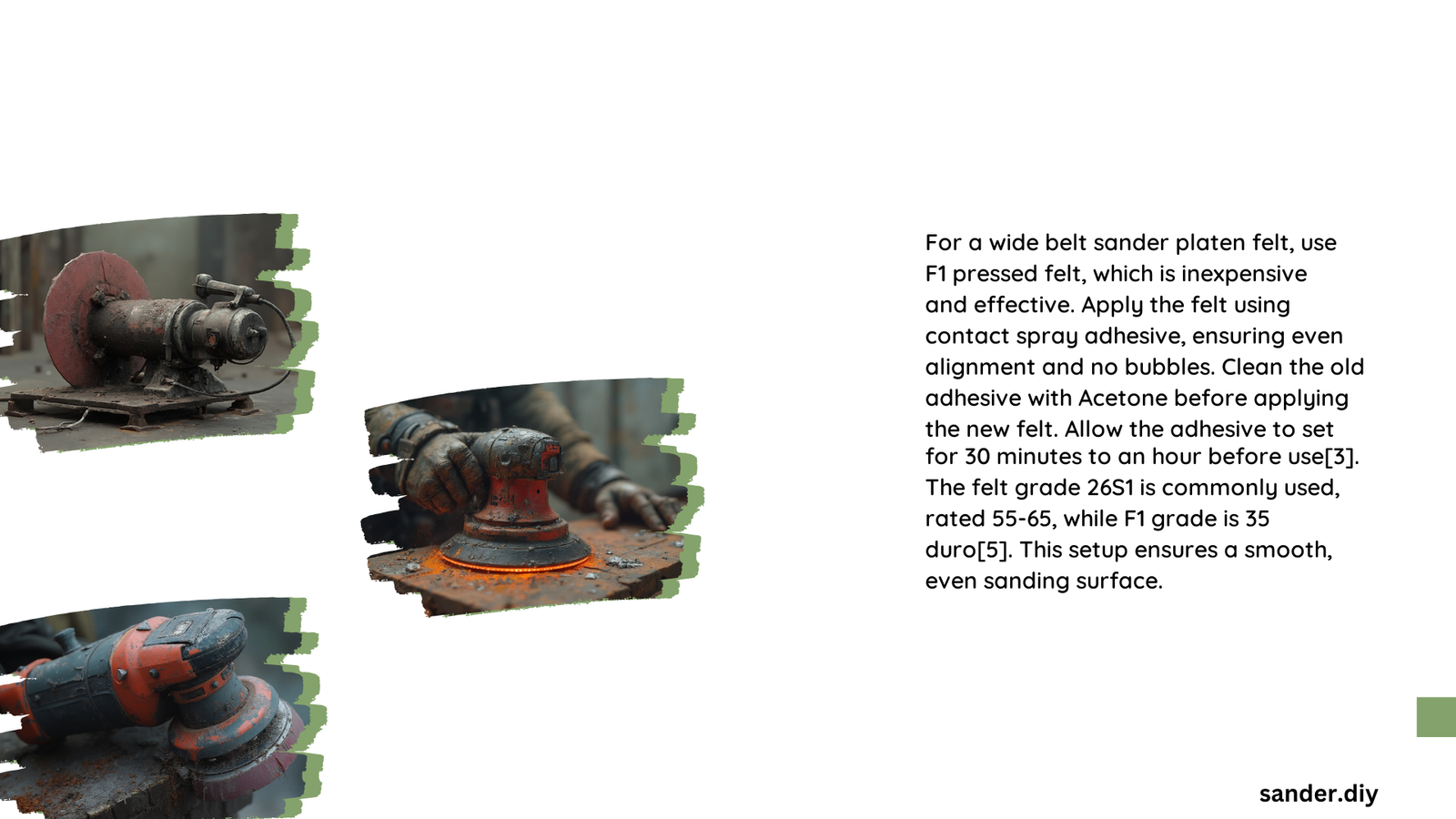Wide belt sander platen felt represents a critical component in precision woodworking and industrial sanding operations. These specialized felt strips play a crucial role in transmitting uniform pressure across sanding surfaces, ensuring consistent material removal and superior finish quality. Understanding the nuanced characteristics of platen felt can significantly enhance machinery performance, reduce wear, and optimize overall sanding efficiency.
What Are the Standard Dimensions for Wide Belt Sander Platen Felt?
Wide belt sander platen felt comes in various dimensions tailored to specific machinery requirements. The most common specifications include:
| Dimension Type | Typical Range |
|---|---|
| Width | 7-10 cm |
| Length | 100-140 cm |
| Standard Thickness | 10 mm |
| Density | 0.40 Kg/m³ |
Key Characteristics of Platen Felt
- Material Composition: Typically manufactured from natural or synthetic wool fibers
- Density Variations: Impacts pressure transmission and durability
- Flexibility: Determines adaptability to different sanding surfaces
How Do You Select the Right Platen Felt?

Selecting appropriate wide belt sander platen felt involves considering several critical factors:
- Machine Compatibility
- Verify exact platen dimensions
- Check manufacturer specifications
-
Ensure precise fit for optimal performance
-
Sanding Application
- General sanding: Standard 10 mm felt
- Heavy-duty tasks: Denser, thicker felt
- Precision work: Thinner, more flexible options
What Adhesives Work Best for Platen Felt Installation?
Recommended adhesive options include:
- 3M 847 industrial adhesive
- 3M 90 contact adhesive
- Specialized woodworking bonding agents
Installation Best Practices
- Apply adhesive evenly
- Ensure complete surface coverage
- Allow recommended curing time
- Maintain controlled environmental conditions
How Often Should Platen Felt Be Replaced?
Replacement frequency depends on:
- Usage intensity
- Material being sanded
- Maintenance practices
- Visible wear and performance degradation
Replacement Indicators
- Uneven sanding results
- Visible surface deterioration
- Reduced pressure transmission
- Decreased overall sanding quality
What Maintenance Techniques Extend Platen Felt Lifespan?
Effective maintenance strategies include:
- Regular cleaning
- Proper storage
- Avoiding excessive heat exposure
- Periodic inspection for wear
- Gentle handling during installation
Professional Recommendations
- Use manufacturer-recommended cleaning solutions
- Avoid abrasive cleaning methods
- Store in temperature-controlled environments
- Replace at first signs of significant wear
Troubleshooting Common Platen Felt Issues
Common challenges and solutions:
- Air Bubbles: Ensure meticulous adhesive application
- Misalignment: Use precise measurement techniques
- Premature Wear: Select appropriate density for specific applications
Cost Considerations
Platen felt pricing varies based on:
– Material quality
– Dimensions
– Manufacturer
– Specialized requirements
Estimated Price Range
- Standard felt: $50-$150
- Specialized industrial grade: $150-$300
Expert Tips for Optimal Performance
- Always follow manufacturer guidelines
- Invest in high-quality felt
- Perform regular maintenance
- Train operators on proper handling
Conclusion
Wide belt sander platen felt represents a nuanced yet critical component in precision woodworking and industrial sanding. Careful selection, proper installation, and consistent maintenance ensure superior performance and extended machinery lifespan.
